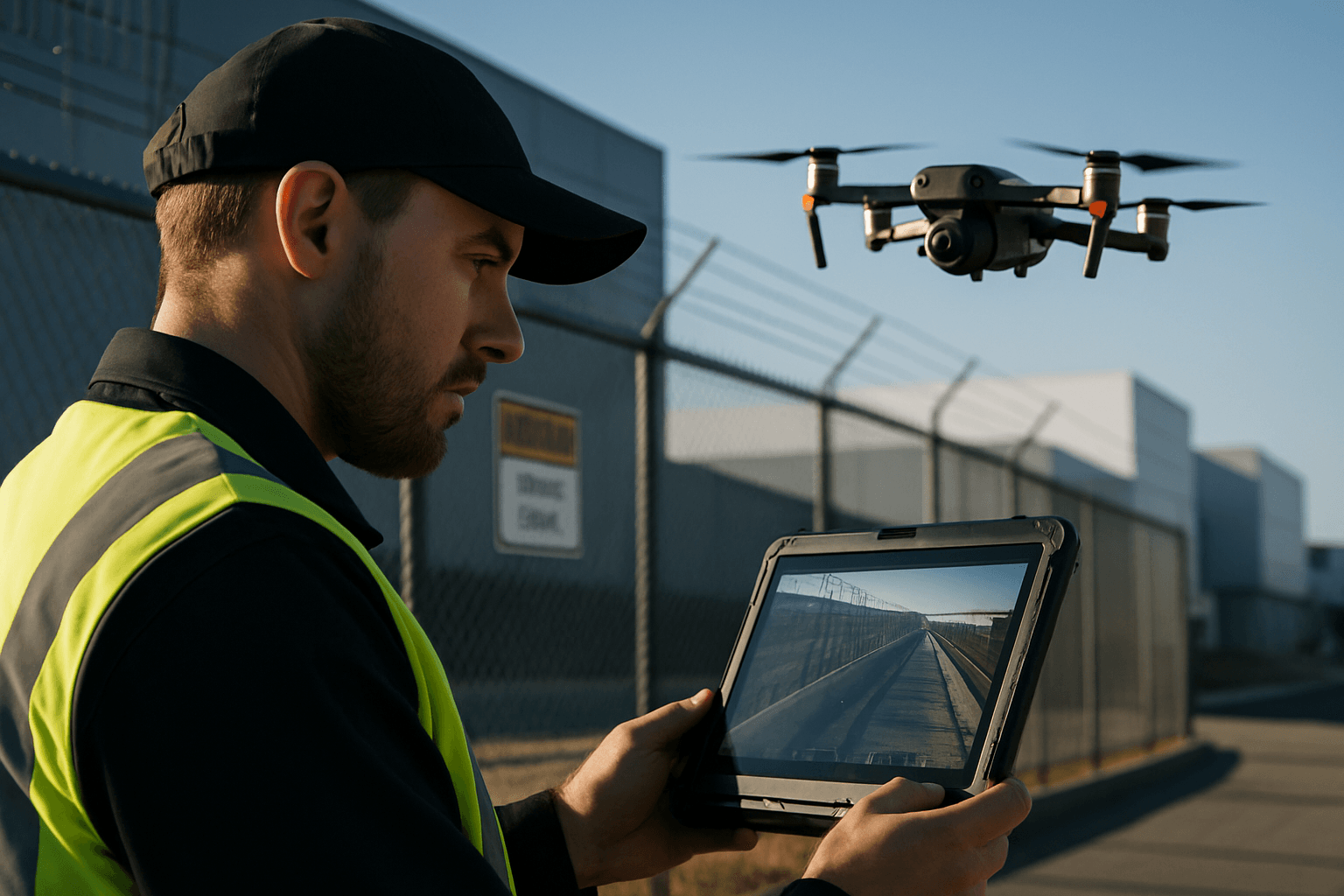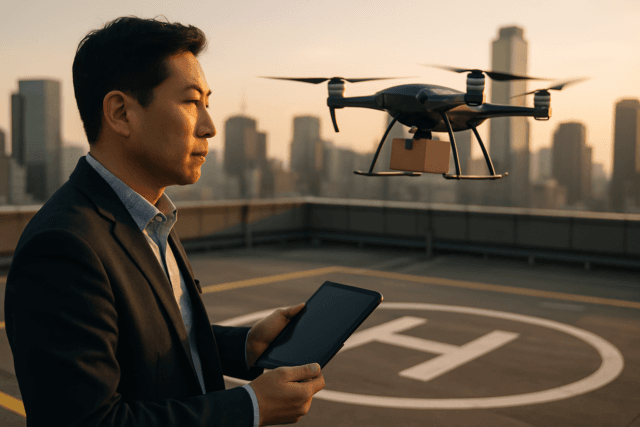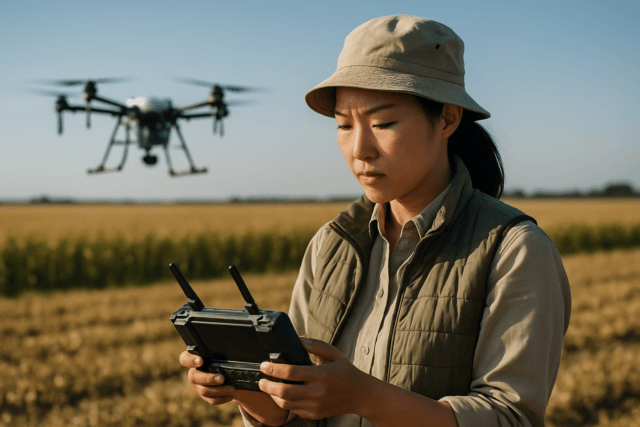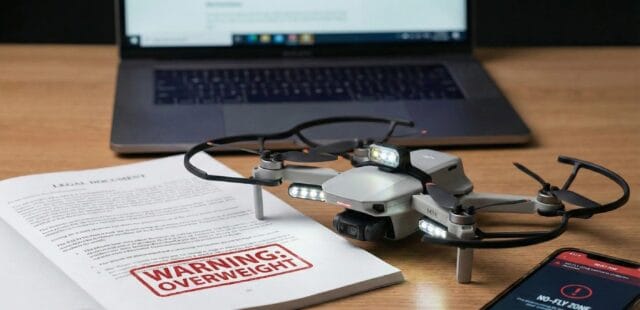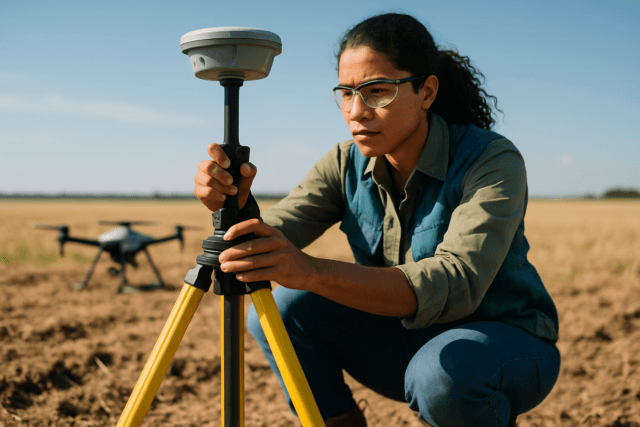Imagine a vast, impenetrable digital wall, not static and predictable like the ancient city walls, but dynamic, ever-shifting, and omnipresent. For centuries, perimeter security relied on tangible barriers—fences, guard towers, and patrolled routes. These methods, while foundational, inherently possessed blind spots, human limitations, and a reactive nature. An alarm would sound, and only then would response begin. But what if the “alarm” was already an eye in the sky, intelligently anticipating threats before they materialized? This is the transformative promise of drone-based perimeter intrusion detection, an innovation rapidly redefining the landscape of modern security in the aerospace and technology sectors.
Unmanned Aerial Vehicles (UAVs), commonly known as drones, have moved beyond niche military applications and hobbyist pursuits to become indispensable tools in commercial and industrial security. Their ability to provide elevated, dynamic surveillance offers significant advantages over traditional ground-based systems, enabling proactive threat detection and vastly improved response capabilities.
The Paradigm Shift: Why Drones Excel in Perimeter Security
The core effectiveness of drone-based perimeter intrusion detection stems from several key capabilities that traditional methods struggle to match:
Enhanced Coverage and Situational Awareness
Drones offer a bird’s-eye view, providing wider coverage of monitored areas than fixed cameras or ground patrols. They can fly at various heights and angles, capturing footage from locations difficult or impossible for human personnel or stationary cameras to reach, effectively eliminating blind spots. This comprehensive aerial perspective allows for better real-time situational awareness and more effective identification of potential security threats.
Rapid Response and Deterrence
One of the most compelling advantages is the speed with which drones can be deployed to investigate potential security breaches. A drone can reach the scene of an incident far quicker than a patrol vehicle or security officer, providing real-time aerial images and footage. This rapid deployment enables security staff to assess the level of danger, identify the appropriate response, and even deter intruders before they gain entry. The visible presence of a patrolling drone can act as a powerful deterrent.
Cost-Effectiveness and Resource Optimization
While requiring an initial investment, drones can be a cost-effective alternative to extensive human security teams and the infrastructure needed for traditional systems. By automating routine patrols, drones reduce the need for expensive human resources like security guards, potentially offering 24/7 surveillance with fewer shifts. In 2025, the true return on investment (ROI) comes from automation and data, with “Drone-in-a-Box” (DiaB) systems eliminating the need for on-site pilots for routine patrols. This multi-mission capability can also add business value beyond security, such as site mapping or infrastructure inspection.
Improved Safety for Personnel
Drones can be deployed to investigate hazardous or hard-to-reach areas, reducing the risk to human security personnel in situations like gas leaks, chemical spills, or unverified alarms. They can provide critical visual information before humans are sent into potentially dangerous environments.
Flexibility and Customization
Drones offer significant flexibility, capable of being deployed quickly for various scenarios, including event security, construction site monitoring, and critical infrastructure protection. They can be programmed to follow specific flight paths, patrol designated areas, and even be repositioned on-demand to areas requiring more focus. Modern drone platforms are increasingly multi-task assets, capable of performing diverse missions with different payloads.
The Technological Arsenal: Sensors and AI at the Forefront
The effectiveness of drone-based perimeter intrusion detection is heavily reliant on the advanced sensor payloads they carry and the sophisticated artificial intelligence (AI) that powers their operations:
High-Resolution Cameras and Thermal Imaging
Many security drones are equipped with high-resolution visual cameras, often capable of 4K HD recording, providing live video feeds and detailed footage. For round-the-clock surveillance, night vision cameras utilizing infrared technology enhance visibility in low-light conditions. Thermal imaging sensors are crucial for detecting heat signatures, allowing drones to identify people, vehicles, or animals in complete darkness or dense environments, a key factor in intrusion detection.
LiDAR and GPS
LiDAR (Light Detection and Ranging) sensors create precise three-dimensional maps of the drone’s surroundings, aiding in obstacle avoidance, navigation, and detailed environmental mapping. GPS sensors are vital for navigation, providing accurate positioning data for precise location tracking, geofencing (restricting operations to designated boundaries), and autonomous flight paths.
AI-Powered Analytics and Object Recognition
The integration of AI and machine learning is transforming drone security. AI algorithms analyze movement patterns to differentiate between humans, vehicles, and animals, significantly reducing false alarms. AI-powered drones can automatically identify objects that pose threats, detect unusual activity like unauthorized access or loitering, and even be configured to initiate specific actions in real-time. Some advanced models include facial recognition and license plate recognition capabilities. AI-driven systems provide instant threat detection, automated alerts, and allow for real-time video analysis and predictive threat analysis.
Other Crucial Sensors
Beyond visual and thermal, drones may also incorporate motion sensors to detect movement on the ground, acoustic sensors (microphones) to detect sound signatures and unusual noises, and radio frequency (RF) scanners and radar sensors to detect other drones or electronic signals. Multi-sensor detection systems are increasingly seen as offering more compelling and robust results, especially in complex environments.
Overcoming Challenges: The Path to Widespread Adoption
Despite their significant advantages, drone-based perimeter intrusion detection systems face challenges:
Limited Flight Time and Continuous Surveillance
Traditional commercial drones have limited flight times, typically 20-40 minutes, which may not be sufficient for large areas or extended surveillance. However, “Drone-in-a-Box” (DiaB) systems have largely solved this by enabling autonomous landing, recharging (or battery swapping), and re-deployment, allowing for true 24/7 persistent surveillance with minimal human intervention. Tethered drones also offer continuous 24-hour aerial surveillance with a stable power supply, ideal for static monitoring.
Weather Conditions
Many drones are sensitive to adverse weather conditions such as high winds, heavy rain, or fog, which can compromise their effectiveness or even prevent operation. While some industrial drones are designed for more robust conditions, this remains a limitation for universal deployment.
Regulatory and Privacy Concerns
The use of drones for security raises privacy concerns among individuals and is subject to various regulatory constraints, including restrictions on flight areas or operating hours. Organizations must navigate these complex regulatory environments to ensure compliance and maintain public trust. Secure communication networks and encryption protocols are essential to protect surveillance data from cyber threats.
False Alarms and System Dependency
While AI helps minimize false alarms, traditional systems and even some drone setups can be prone to them, leading to unnecessary responses. Drones are also highly dependent on technology and may be susceptible to system failures like signal loss or malfunctioning equipment. The accuracy and effectiveness of drone detection radar systems, for instance, are critically evaluated based on their false alarm rates.
Integration with Existing Security Infrastructure
The most effective drone-based perimeter intrusion detection systems are not standalone solutions but are integrated seamlessly with existing security frameworks. They complement traditional CCTV systems, motion sensors, access control, and human security personnel by providing an aerial surveillance layer that offers dynamic coverage and real-time data.
In practice, this often involves:
- Centralized Command Centers: Drone feeds are monitored alongside fixed camera feeds in global security operations centers (GSOCs), enabling operators to coordinate comprehensive security responses.
- Automated Triggers: Drones can be configured to launch automatically upon an alarm from a ground sensor or CCTV camera, providing immediate visual verification of a potential intrusion.
- Data Fusion: AI-powered systems can fuse data from various sources, including image recognition, computer vision, and LiDAR, to provide enhanced situational awareness and identify threats more quickly.
Real-World Impact and Future Outlook
Drone-based perimeter intrusion detection has demonstrated significant effectiveness in various industries. In the oil and gas sector, drones monitor pipelines and storage facilities, reducing inspection times and improving incident response. Maritime ports use drones for aerial surveillance to detect suspicious activities and monitor vessel movements, leading to a reduction in security breaches. Critical infrastructure sites, such as data centers and nuclear facilities, have seen enhanced surveillance coverage, improved response times, and reduced risk due to drone deployment. Residential estates have also leveraged autonomous drones for faster response, increased coverage, and improved threat detection.
As drone technology continues to advance, the effectiveness of drone-based perimeter intrusion detection will only grow. Innovations in AI, longer endurance capabilities, more robust designs for varied weather, and increasingly sophisticated sensor packages promise even more precise, autonomous, and integrated security solutions, redefining how organizations safeguard their assets and perimeters in a rapidly evolving threat landscape.

